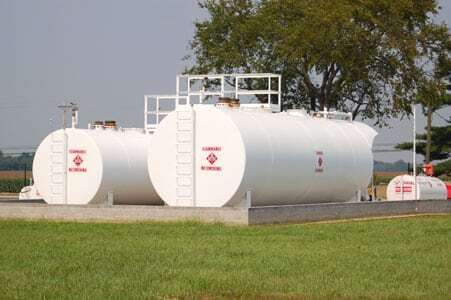It’s a bug’s life! Or is it?
Any industry that uses diesel fuel will be beset by the good old “fuel or diesel bug.” More commonly known as Cladisporium resinae, or Hormoconis resinae, the sludge waste produced by this nasty little critter has the potential to corrode the metal structure of fuel tanks, in turn risking human life and blowing out cost to industry.
The good old diesel bug actually lives in the water found in fuel, and is known to collect at the base of tanks, near drainage sectors and vent bays and areas where condensation may occur. While large scale fungi infestations could lead to blockages in the fuel system, the most pressing problem lies with the more commonly occurring corrosion that is a frequent accompaniment to smaller-scale infestations. In aviation especially, it can cause pitting and corrosion to the fuel tanks and wing structure which has potentially life-threatening consequences.[1]
A successful and cost-effective eradication plan for the fuel bug needs to be a part of any business that is reliant on diesel and fuel. And in this day and age, it is important any implemented plan is also environmentally safe and sound.
Envirosafe Solutions has a one-stop answer to the problem. Efficient, easy to use and with negligible environmental impact, The Extreme Green Diesel Bug Killer is a fast and effective method of control and eradication – safeguarding industry, the environment and human populations against this pervasive little pest. And, “when added to fuel, it absorbs all the water, thus breaking the chain in the environment in which the Diesel Bug can survive. Without water, the bug suffocates and dies, and passes through the filter system until it is finally killed by the combustion process. Most importantly, the diesel bug cannot re-infest when Extreme Green Diesel Bug Killer is mixed in the fuel.[2]
Envirosafe Solutions suggests you follow these key maintenance issues in the control of the diesel bug:
- Carry out water drain checks of the fuel tanks regularly and include vent and surge bays.
- Ensure that all water is removed.
- Keep the tanks full if possible (more fuel means less room for condensation to occur).
- Perform regular testing to monitor the fuel quality.
- Clean tanks thoroughly.
- Fuel fungi are most common in tropical environments, so the northern regions of Australia can be particularly impacted.
- Also, take extra care in more remote areas where there may be less control over fuel quality. Regular maintenance and checking is vital in these regions. [3]
When seeking solutions to the diesel bug for your business and industry, look no further than Envirosafe Solutions Extreme Green Diesel Bug Killer. Telephone Envirosafe Solutions now on 1300 88 90 70.
[1] Bowden, D. Attack of the Fungi. Flight Safety Australia Sept-Oct 2005 pp 50-51. http://www.casa.gov.au/wcmswr/_assets/main/fsa/2005/oct/50-51.pdf
[2] http://www.envirosafesolutions.com.au/productinnerpage.php?cat=14&product=12
[3] Bowden, D. Attack of the Fungi. Flight Safety Australia Sept-Oct 2005 pp 50-51. http://www.casa.gov.au/wcmswr/_assets/main/fsa/2005/oct/50-51.pdf



















